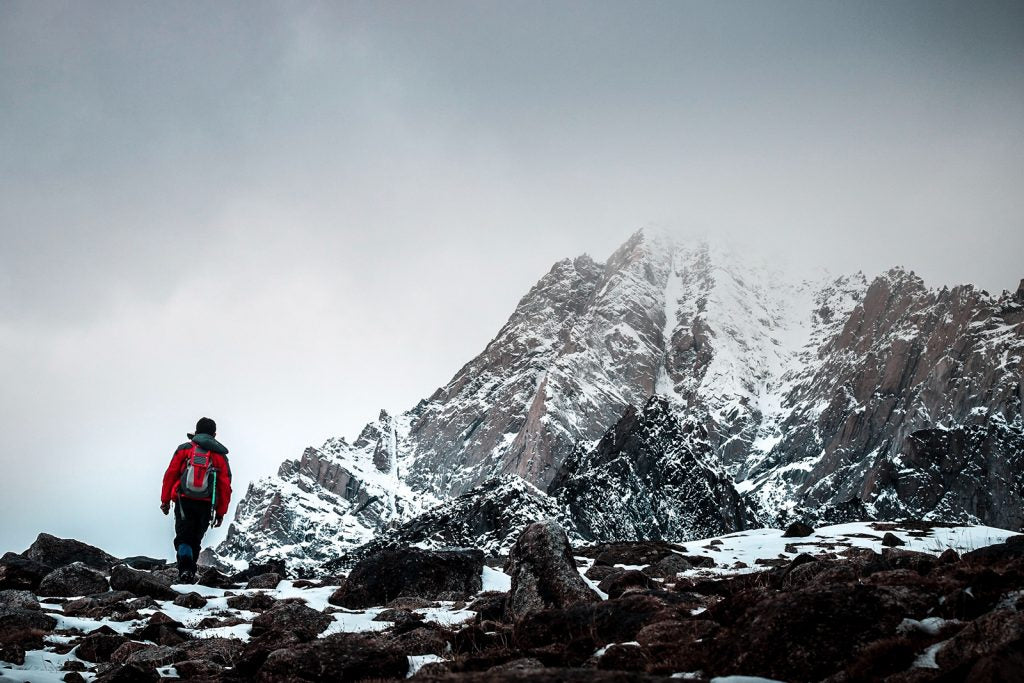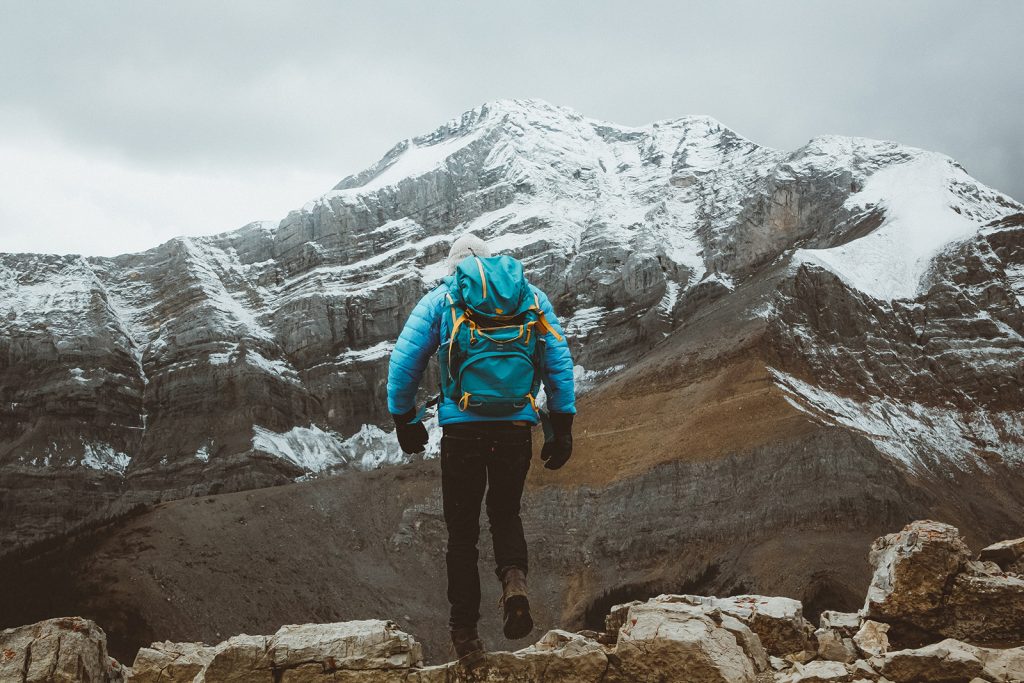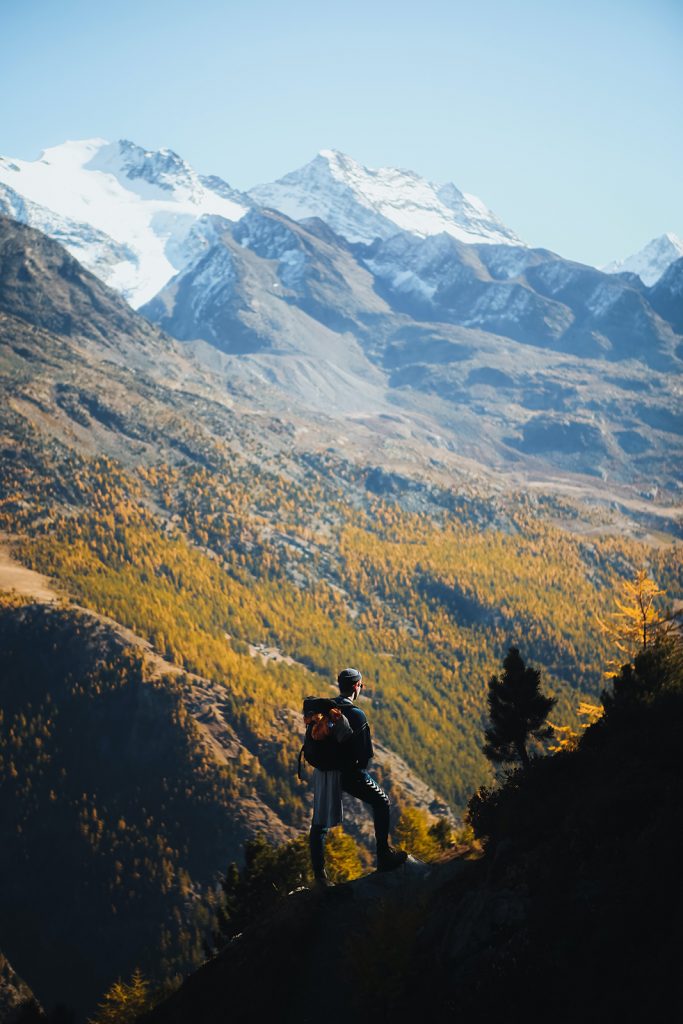Mountains are some of the most exciting and dramatic natural features to explore on our planet. They reach up to the skies and when at the top, provide sweeping views of the landscapes far below. Also, mountains are challenging and allow hikers and climbers to test themselves and their skills. Due to their difficult terrain, staying safe in the mountains can be tricky.
For example, temperatures often plummet when at high altitudes. Also, the air is much thinner and therefore can cause issues with breathing. Many mountains are also treacherous and have landscapes that can shift with the weather. These various pitfalls and dangers mean that to tackle a mountain, you must be prepared! In this guide, we look at staying safe in the mountains and what you can do to ensure you make it to the top and back safely!

The Potential Dangers of Mountain Exploration
First, let’s look at the potential dangers you can experience during mountain exploration. We have already touched on a few in the opening paragraph. Understanding the potential dangers will help you avoid them. It will also make sure you do no underestimate mountain landscapes. Many people do this and it can result in accidents, or even death.
The following are the potential dangers of mountainous landscapes:
- Sheer drops.
- Slippery surfaces.
- Landslides / avalanches.
- Altitude sickness.
- Cold temperatures.
- Snowfall and ice.
- Wildlife.
Firstly, the terrain is often difficult to navigate. You are not simply walking along a nice hiking route. Mountain terrain is usually rugged, broken, and has many pitfalls and sheer drops. Also, the surfaces can be slippery in colder conditions. This can easily result in a slip, trip, or even a fall from a high height.
Due to the nature of mountains, many of them are prone to landslides and avalanches too. For example, Annapurna in Nepal is one of the most dangerous mountains in the world and has multiple avalanches which results in a high fatality rate of 33%!
Aside from the landscape dangers, you must also consider the altitude and temperatures. Altitude sickness is one of the most common ailments for mountaineers and can be fatal. The often freezing temperatures can also lead to exposure and life-threatening conditions like hypothermia.
Finally, some mountain landscapes are also home to wildlife. Generally, you should not have close interactions with wildlife whilst exploring mountains. However, the wildlife could become hostile, or cause you to lose concentration which is equally as dangerous.

Staying Safe in the Mountains – A Three Part Guide
We have broken our guide on staying safe in the mountains into three parts. Firstly, before even setting out, you must be prepared. Secondly, having the right equipment is also essential. Finally, how you behave during your explorations, and how you navigate is also incredibly important if you want to remain safe.
Part 1 – Preparation
Before even setting foot in a mountainous region, you must be prepared. Tackling a mountain isn’t like walking to your local park. It requires planning, preparation, and research. You must understand the terrain, conditions, and route in great detail.
Research the area and your route
Firstly, knowledge is key. It would be highly irresponsible and dangerous to venture into a mountain region without any knowledge of the area or route. Mountains are not things you can simply explore at will. Most mountains have dedicated routes that have been created and assessed by professional mountaineers. Deviating from these routes could be fatal.
Therefore, first spend time researching the area. Where is the nearest village or town? What facilities are nearby to the starting point? Are there any rescue services and do they have a contact number? Next, look at the summit routes. Oftentimes, mountains have several routes with varying degrees of difficulty and safety.
For example, K2 in Pakistan has five major routes to the summit, and most people use the Abruzzi Spur route because it is the “easiest”.

Research seasonal weather conditions
Understanding the weather conditions is also important. In most instances, temperatures are much lower in mountainous regions. The temperature will also usually drop the higher you reach. You should understand the changing temperatures and conditions so you know what clothing to wear.
Also, looking at the seasonal weather will give you a clear idea of when to explore the mountain. For example, most people consider April to May to be the best time to climb Everest due to the greater visibility. If you know the differences in seasonal weather, you can pick the optimum time for your mountain adventure.
Tell at least one other person where you are going
Whenever exploring any potentially dangerous terrain, it is always vital that at least one other person (not traveling with you) knows your plans. This is important if you are a solo traveller. If something should happen during your trip, emergency services need a next of kin to contact. Also, if you are unable to contact emergency services and go missing for a length of time, if someone knows where you were traveling, they can raise their concerns.
Even if you are traveling as part of an organized tour such as Intrepid Travel, it is still best practice to share your itinerary with a family member or friends. This acts as a safeguard should something happen during your trip.
The information you give a friend or family member should include the address of any accommodation you are stopping at. Also, if you are climbing a mountain, you should disclose the summit route you intend to take. This information could prove invaluable to mountain rescue teams in an emergency.

Look at official information websites for advice
Finally, we also advise checking local tourism websites, or dedicated climbing websites associated with the region you are exploring. These websites typically give specialist information that could be vital to your safe travel. For example, some websites may provide weather updates and weather warnings.
Some highly useful websites include Mountain-forecast.com, Snow-forecast.com, and MWIS.org.uk. These are three fantastic websites that provide detailed meteorological information for various mountains around the world including mountains in the UK (You can learn about some UK mountains in our guide on the hardest hikes in the UK too!).

Part 2 – Equipment
Now that you are prepared, you need the right gear! The gear list isn’t extensive, but there are some specialist items that we advise taking. Having the correct gear will firstly make hiking and climbing easier. It will make the physical aspects of mountaineering less strenuous. Also, the correct equipment can aid with navigation, and staying safe if you get lost or encounter any unexpected conditions.
- Map.
- Compass.
- Torch.
- Hiking Boots.
- Trekking Poles.
- Sunscreen.
- Water.
- Suitable clothing.
- Backpack.
- Snacks.
- First aid kit.
- Heat blanket.
Essential items when embarking on any hike include a torch, first-aid kit, and a map and compass. Hopefully, you will not have to use any of these, however its best practice to have them handy. A map and compass in particular can provide invaluable when exploring mountains. Visibility is often poor, and oftentimes you cannot get a GPS signal for your smartphone. As a result, a map and compass still give you a reliable method of navigation.
Having a plentiful supply of water is also essential for staying safe in the mountains. You can quickly become dehydrated through over-exertion. Also, mountainous terrain is often highly reflective and you can burn easily. Therefore, using sunscreen is important to protect any exposed skin.
We also advise having an emergency heat blanket. You can find a range of portable emergency heat blankets on Amazon. These simple accessories are usually made from thermal materials and will keep you warm if you get stranded.
Finally, in terms of footwear, a quality pair of hiking boots are vital. Hiking boots provide support for your feet and ankles. Also, they have superior grip compared to other footwear. Having a quality pair of hiking boots will allow you to tackle the terrain easier. You may also want to invest in a trekking pole for additional support.
Clothing
In terms of clothing, the most important factor is to dress in layers. Start with a base layer next to your skin. This could include thermal leggings and a thermal top. Over this, you would have a middle later. This could include waterproof trousers, and a quality waterproof jacket.
Finally, a top layer would include gloves and a hat, and potentially a waterproof parka. What clothing you take depends entirely on the weather conditions and temperatures. However, by dressing in layers, you can adapt your clothing to suit the changing conditions as you climb.
Pack beforehand and double-check everything
Part of staying safe in the mountains is double-checking your movements and actions. Therefore, double-check your backpack once you have packed it! This will take no time at all. For just 5 minutes of checking and re-packing, you can ensure that you have not forgotten any vital piece of equipment. You could even create a checklist to tick off each item! Be thorough!
Part 3 – Safe Exploration
You are now fully prepared – you know the route, have assessed the weather conditions, and your backpack and gear as assembled. It’s time to start your exploration and venture into the mountainous landscapes! Whilst exploring mountains, there are several things you can do to improve your safety.
Above all, it is important to use your common sense and think logically. Don’t rush. Keep a steady pace and concentrate at all times. Cutting corners and rushing can be seriously irresponsible and lead to fatalities. The following are other important things you can do to keep safe during your epic adventure:
Adapt to changing circumstances
Mountain landscapes are incredibly changeable. One minute the weather could be clear and cool, the next minute you could be surrounded by a blizzard with little to no visibility. As a result, you must be adaptable. Oftentimes what you intended or planned may not transpire during your mountain trek – Mother Nature often has other ideas.
If you find that the weather forecast has dramatically changed overnight, consider postponing the trek. Alternatively, if the weather suddenly turns bad during your climb, there is no harm in turning back! Adapting to the situation could potentially save your life.
Also, adapt to changes in yourself. For example, if you feel unwell or less than 100% on the morning of your trek, it may be prudent to delay. Alternatively, you could simply plan a less-strenuous route. Tackling a mountain when you feel less than 100% can be disastrous.

Start your hike early in the day
When planning, you should ideally have an idea of how long the trek will take. Unless you want to see a gorgeous sunset or sunrise at the top of a mountain range, it is generally better to start early in the morning. The conditions will be better, and of course, it is usually easier to hike in mountainous terrain during daylight. At night, the landscape can change and it is easy to lose your footing or fall.
By starting early, you can give yourself plenty of time to explore. Also, this allows for any unexpected moments and deviations from your plan. We advise adding a couple of hours to your starting time to be sure. For example, if you wanted to start at 8 am, start at 6 am just to give yourself enough time!
Be respectful of nature and wildlife
This is not as much as a safety tip, as it is an environmental tip. Whenever traveling outdoors, you must be respectful of nature. If you are wild camping – follow camping etiquette and don’t leave any sign of your camp. Also, never leave any rubbish, and try to have a minimal impact on your surroundings.
Mountain landscapes often have great balance and dislodging even a single stone, for example, could cause an avalanche. Also, always respect any wildlife you see. Maintain a safe distance, and don’t damage any habitats.
Turn around if you are unsure
Regardless of how much you plan, and the equipment you take, there may be an instance where the route ahead becomes dangerous. For example, a small landslide could block a path. In instances like this, it is usually best practice to turn around.
If you try to persevere through incredibly dangerous conditions, you could risk your life. Sure, it may be rewarding climbing over that landslide. However, the likelihood is that you will dislodge more rocks and potentially cause a huge avalanche. In mountaineering, the saying “it is better to be safe than sorry” is poignant.

Don’t Underestimate the Power of Mountains
We hope you have found this guide on staying safe in the mountains useful. Mountain exploration is incredibly rewarding. However, it can also be extremely dangerous and fatal. This is why we urge you to appreciate and respect the sheer awesomeness and majesty of these lofty landscapes.
If you plan accordingly, take the right equipment with you, and explore with caution and common sense, there is no reason why you cannot conquer any mountainous terrain!

